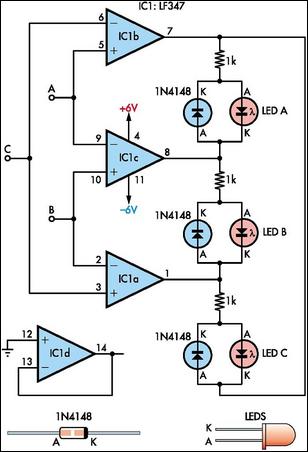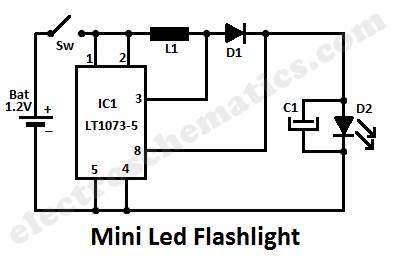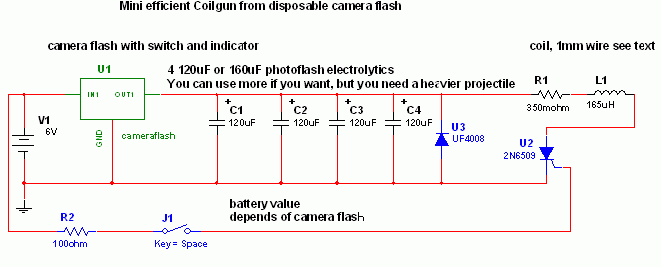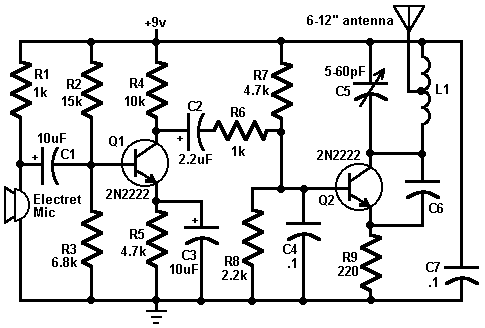
Mini Alarms
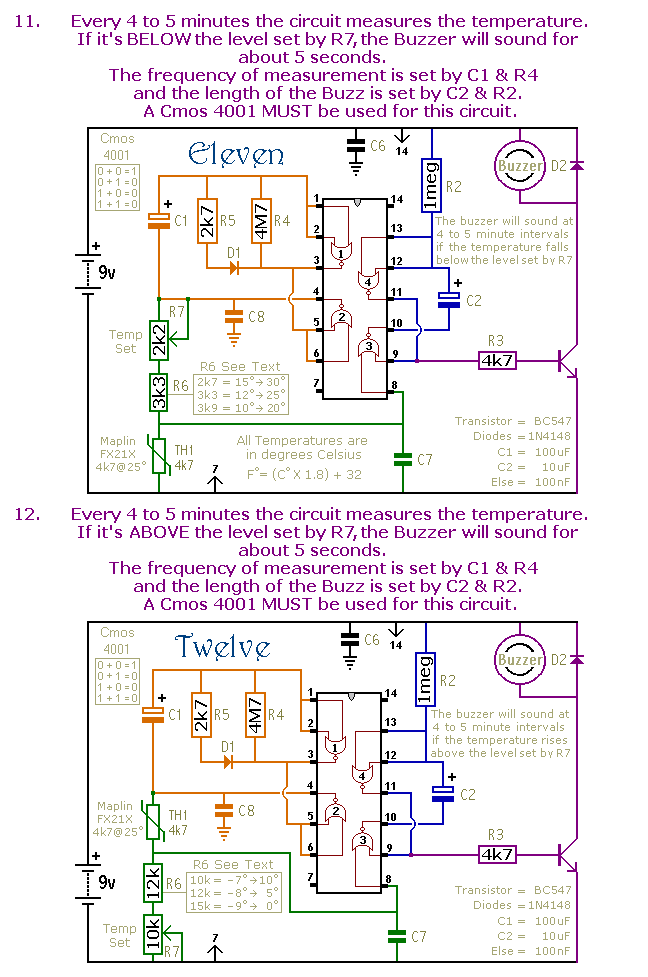
This is a selection of small self-contained alarm circuits. They have a very low standby current; and are suitable for battery operation.
The described alarm circuits are compact and designed for low power consumption, making them ideal for battery-powered applications. These circuits typically incorporate essential components such as a microcontroller or a dedicated alarm IC, passive components (resistors, capacitors), and an output device like a buzzer or LED indicator.
The low standby current ensures that the battery life is extended, allowing the alarm systems to function effectively over long periods without frequent battery replacements. The design may include features such as a sleep mode, where the circuit consumes minimal power when inactive, and wakes up to full operation upon detection of an alarm condition.
The alarm circuits may also have adjustable sensitivity settings to prevent false alarms and accommodate different environments. Input sensors could include motion detectors, door/window contacts, or smoke detectors, depending on the intended application.
Integration with additional components such as wireless transmitters may also be considered for remote monitoring capabilities. The overall architecture of these circuits emphasizes reliability, ease of installation, and user-friendliness, catering to various security needs in residential or commercial settings.This is a selection of small self-contained alarm circuits. They have a very low standby current; and are suitable for battery operation. 🔗 External reference
The described alarm circuits are compact and designed for low power consumption, making them ideal for battery-powered applications. These circuits typically incorporate essential components such as a microcontroller or a dedicated alarm IC, passive components (resistors, capacitors), and an output device like a buzzer or LED indicator.
The low standby current ensures that the battery life is extended, allowing the alarm systems to function effectively over long periods without frequent battery replacements. The design may include features such as a sleep mode, where the circuit consumes minimal power when inactive, and wakes up to full operation upon detection of an alarm condition.
The alarm circuits may also have adjustable sensitivity settings to prevent false alarms and accommodate different environments. Input sensors could include motion detectors, door/window contacts, or smoke detectors, depending on the intended application.
Integration with additional components such as wireless transmitters may also be considered for remote monitoring capabilities. The overall architecture of these circuits emphasizes reliability, ease of installation, and user-friendliness, catering to various security needs in residential or commercial settings.This is a selection of small self-contained alarm circuits. They have a very low standby current; and are suitable for battery operation. 🔗 External reference

